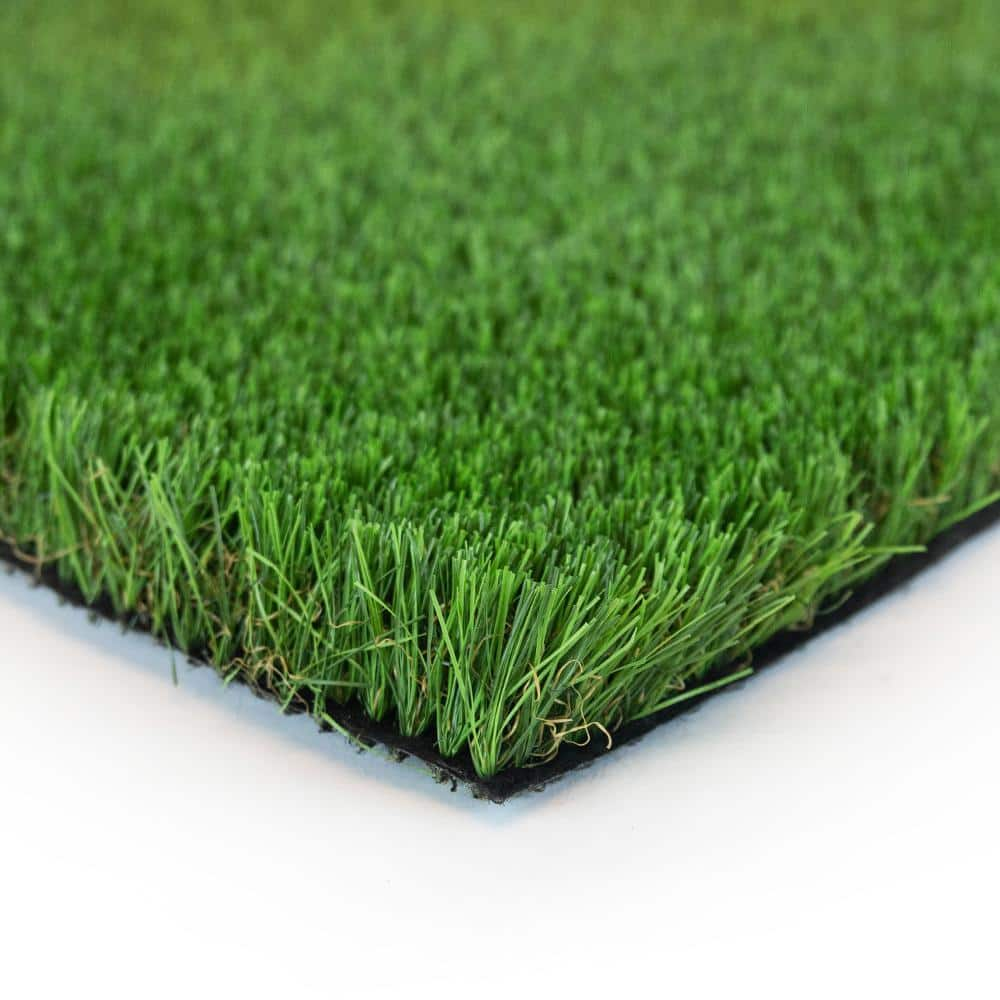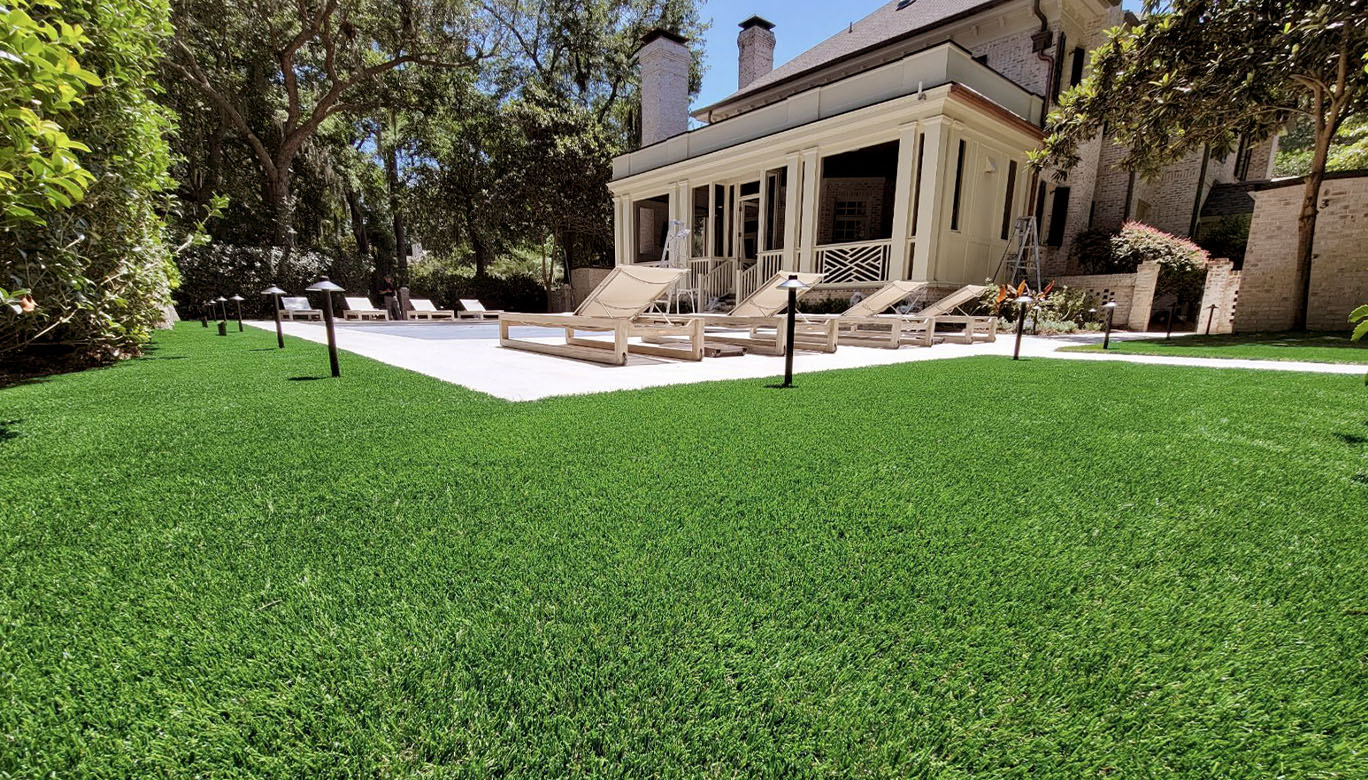Explore the Environmental Perks of Opting for Synthetic Grass Solutions
The adoption of synthetic grass remedies offers an engaging opportunity to address pushing ecological obstacles. By dramatically lowering water use and lessening the application of harmful chemicals, these choices not just advertise sustainable landscape design yet likewise safeguard local communities. The reduced carbon footprint associated with lowered maintenance tasks adds to a more lasting method to land administration. The implications of these benefits extend past plain preservation efforts, elevating questions regarding their long-term influence on habitat conservation and overall environmental balance. Checking out these measurements reveals a complicated interaction worth taking into consideration.
Water Conservation Perks
One of the most significant advantages of artificial turf is its capacity to preserve water. In contrast, synthetic turf does not need watering, substantially minimizing the general need for water resources.
By getting rid of the need for routine watering, artificial grass adds to lasting landscape methods and assists mitigate the environmental effect of excessive water usage. The conservation of water expands to the decrease of drainage, which can lead to soil disintegration and river air pollution.
Additionally, the setup of synthetic grass allows home owners and municipalities to assign water resources much more successfully, concentrating on essential uses such as drinking water and agriculture. The shift towards artificial turf not only promotes responsible water use yet additionally straightens with more comprehensive ecological objectives intended at protecting natural deposits.
As communities increasingly prioritize sustainability, the water preservation advantages of synthetic grass provide a compelling case for its fostering in household and industrial landscaping projects.
Reduced Chemical Usage
The change to synthetic grass significantly lowers the reliance on chemical treatments commonly made use of in natural turf upkeep. Typical lawn administration normally involves the application of pesticides, herbicides, and plant foods to promote development and control bugs. These chemicals can position risks to human wellness, neighborhood wildlife, and the environment, adding to soil and water contamination.
On the other hand, synthetic grass removes the requirement for these hazardous materials. When installed, it calls for minimal upkeep, mostly consisting of normal cleaning and occasional infill replenishment. This decrease in chemical usage not only profits the immediate atmosphere yet also adds to broader environmental security. By reducing the launch of artificial compounds into the environment, synthetic grass advertises healthier soil and water supply.
Moreover, the absence of chemical drainage related to synthetic grass setups assists secure neighborhood rivers from air pollution, sustaining water life and preserving biodiversity. Arizona artificial turf. As areas significantly focus on lasting methods, choosing for synthetic grass presents a practical service that aligns with environmental preservation goals. Through this shift, residential property proprietors can delight in lush green rooms without jeopardizing environmental health, leading the method for a much more sustainable future
Reduced Carbon Footprint

In addition, the installation of synthetic grass can result in considerable water preservation. Natural yards call for considerable quantities of water for watering, which not only contributes to the carbon impact related to water extraction and therapy yet also pressures local water resources. In comparison, synthetic grass needs very little upkeep, requiring no watering, thus considerably reducing water usage and its associated energy expenses.
Furthermore, the long life of synthetic grass adds to its decreased carbon influence. With a life-span of approximately 15 years or even more, the demand for constant replacements is diminished, resulting in less waste and lower energy usage in production and getting rid of typical yard alternatives. Overall, synthetic grass provides a lasting choice get redirected here for ecologically mindful landscaping.
Habitat Preservation
Environment conservation is an important factor to consider in the dispute over landscape design options, particularly when contrasting synthetic grass to natural turf. Natural grass lawns frequently require comprehensive maintenance, consisting of making use of pesticides, herbicides, and fertilizers, which can negatively influence local ecosystems. These chemicals can leach right into the dirt and rivers, hurting native plants and animals and disrupting local environments.
In contrast, artificial turf presents a possibility to decrease the eco-friendly footprint of landscape design. By selecting artificial turf, homeowners can lessen the disruption of natural environments associated with typical grass treatment practices. Man-made lawn gets rid of the demand for damaging chemicals, therefore safeguarding neighboring wildlife and maintaining the stability of surrounding environments. The installation of synthetic grass can lead to the conversion of former turf areas into more biodiverse landscapes, such as pollinator yards or native plant locations, which can sustain local wildlife.
Ultimately, the transition to synthetic grass not only preserves water and decreases maintenance initiatives yet likewise promotes a more unified partnership between human activities and the natural environment, promoting environment preservation while doing so.
Long-Term Sustainability
Long-term sustainability is a vital aspect in examining the advantages of synthetic grass over standard turf lawns. One of the most considerable benefits of synthetic grass is its sturdiness; it can last as much as 15-20 years with minimal upkeep, whereas natural lawn requires constant reseeding and replacement. This longevity reduces the requirement for consistent sources, such as water, plant foods, and pesticides, which are essential for preserving a healthy turf yard.
Furthermore, synthetic lawn this article adds to a decrease in carbon emissions connected with lawn treatment equipment. Typical yards frequently call for gas-powered mowers, leaners, and blowers, all of which add to air pollution. Arizona turf. On the other hand, fabricated grass removes the need for such devices, promoting a cleaner atmosphere
Furthermore, the manufacturing of synthetic grass progressively makes use of recycled materials, enhancing its sustainability profile. As makers take on eco-friendly practices, the environmental footprint of synthetic grass continues to reduce.

Final Thought
The fostering of synthetic grass solutions presents significant environmental advantages, including significant water preservation, lowered dependence on hazardous chemicals, and a reduced carbon footprint. Man-made grass help in maintaining natural habitats by lessening land disruption and promoting long-term sustainability via the usage of resilient materials. Jointly, these aspects highlight the potential of synthetic grass to add positively to ecological wellness and provide a viable choice to standard landscape why not try this out design methods in an increasingly resource-conscious world.
In contrast, fabricated lawn does not require watering, substantially lowering the general demand for water resources. By minimizing the release of artificial substances right into the community, artificial lawn promotes much healthier dirt and water systems.
Additionally, the installment of man-made grass can result in considerable water preservation. In comparison, man-made lawn needs marginal maintenance, needing no watering, thereby dramatically decreasing water usage and its linked energy prices.

Comments on “Environmentally Safe Arizona Artificial Turf for a Year-Round Lush Green Lawn”